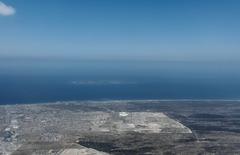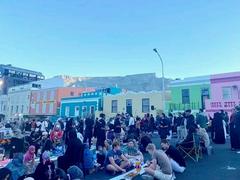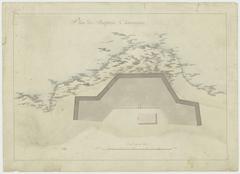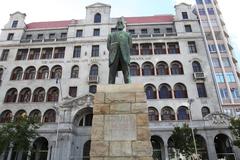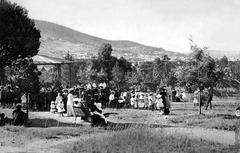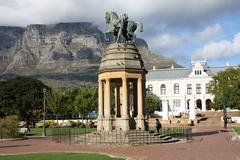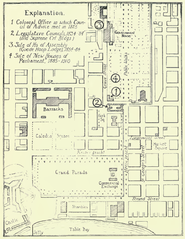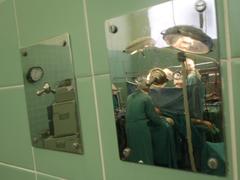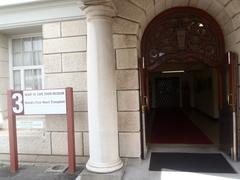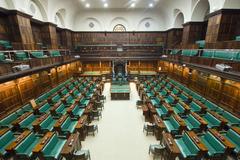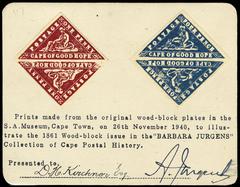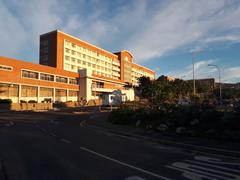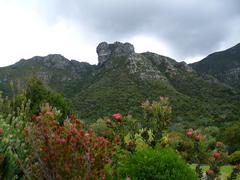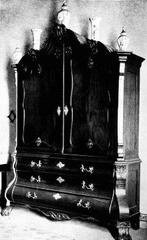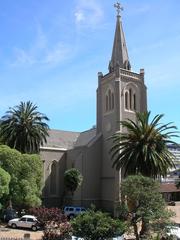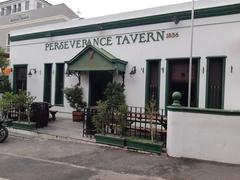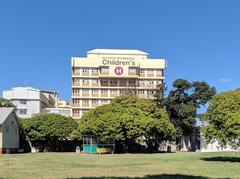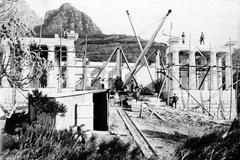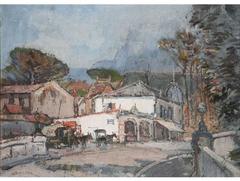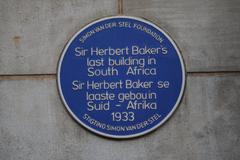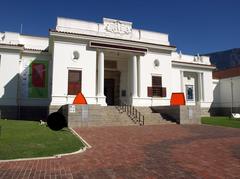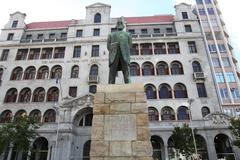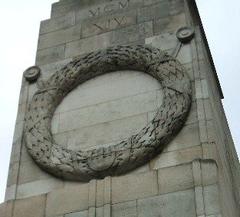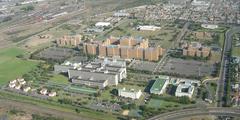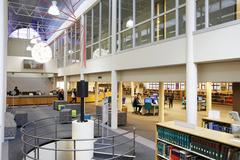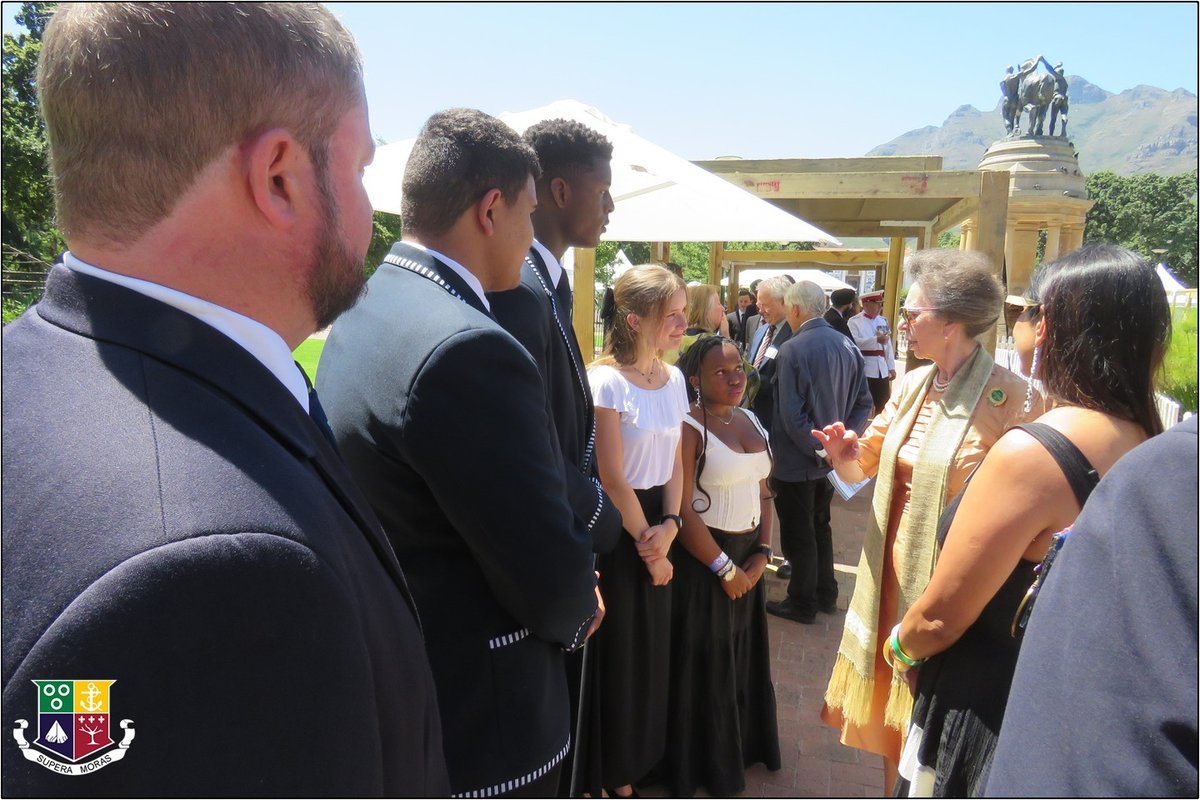
Cape Town Labour Corps Memorial Visiting Hours, Tickets, and Guide
Date: 14/06/2025
Introduction
The Cape Town Labour Corps Memorial, located in the historic Company’s Garden, is a landmark of profound significance in South Africa. Honoring over 1,700 black South African men who served in non-combatant roles during World War I, the memorial acknowledges the sacrifices of the South African Labour Corps (SALC)—a group whose contributions were largely unrecognized for decades due to systemic racism and colonial-era prejudices (defenceWeb; BBC News).
Unveiled in January 2024 (or January 2025 according to some sources) by Princess Anne, President of the Commonwealth War Graves Commission (CWGC), the memorial features 1,772 African Iroko hardwood posts, each engraved with the name and date of death of a fallen member. Designed through a national competition and crafted by local artisans, the memorial embodies South Africa’s cultural heritage and the broader legacy of World War I (Find a Grave; Observatory Civic Association).
Beyond commemoration, the site educates visitors about the marginalized contributions of African and Asian laborers in the war. A specially commissioned poem by South African poet Koleka Putuma and British poet Daljit Nagra further imbues the memorial with artistic depth (TimesLIVE). Free to visit and fully accessible, the memorial is complemented by nearby historical landmarks and educational resources, making it a meaningful destination for all interested in South Africa’s rich and complex history (CWGC; IOL).
Table of Contents
- Introduction
- Historical Background: The South African Labour Corps
- The Creation and Symbolism of the Memorial
- Visiting Information: Hours, Tickets, Location, and Accessibility
- Memorial Design and Architecture
- Commemoration and Registers
- Cultural and Educational Importance
- Tips for a Meaningful Visit
- Visitor Etiquette, Safety, and Amenities
- Travel Tips and Nearby Attractions
- Events and Commemorations
- Frequently Asked Questions (FAQ)
- References and Further Reading
Historical Background: The South African Labour Corps
The South African Labour Corps (SALC) was established during World War I as part of the British Empire’s effort to mobilize non-combatant labor from its colonies. Comprising primarily black South Africans, the SALC undertook vital roles: building roads, railways, military infrastructure, and providing logistical support under harsh and often perilous conditions. Tragically, over 1,700 members died—many from disease, accidents, or disasters like the SS Mendi sinking in 1917, which alone claimed around 600 lives (defenceWeb; BBC News).
Despite their essential contributions, these men were denied equal recognition, and their sacrifices remained largely unacknowledged for generations due to racial discrimination within official commemoration practices (defenceWeb).
The Creation and Symbolism of the Memorial
Design and Artistic Elements
The memorial’s design—selected through a national competition and realized by Dean Jay Architects—features 1,772 Iroko hardwood posts set into South African Rustenburg granite. Each post is engraved with a serviceman’s name and date of death, transforming the memorial into a space of personal and collective remembrance (Find a Grave).
A specially commissioned poem by Koleka Putuma and Daljit Nagra is inscribed onsite, weaving themes of loss, remembrance, and delayed recognition into the visitor experience (TimesLIVE). The memorial is divided into five zones—each representing a year of World War I—with posts arranged in avenues for clarity and accessibility. At the center, a trilingual podium highlights South Africa’s linguistic and cultural diversity.
Visiting Information: Hours, Tickets, Location, and Accessibility
Location
The memorial is located in the Company’s Garden, Cape Town’s central historic park, surrounded by landmarks such as the Iziko South African Museum, South African National Gallery, and St George’s Cathedral (CWGC; SA Good News).
Opening Hours and Entry
- Company’s Garden & Memorial: Open daily, sunrise to sunset (typically 6:00 AM to 6:00 PM)
- Admission: Free to all visitors
- Memorial Register: Available at the Iziko South African Museum (open 09:00–17:00 daily; 08:30–16:00 on winter weekends; museum entry may require a ticket)
Accessibility
- Wheelchair-accessible paths and seating areas are provided.
- Informative panels feature clear, legible text.
- Restroom facilities are nearby.
Getting There
- On Foot: Easily reachable from central Cape Town (The Unconventional Route).
- Public Transport: Served by MyCiTi bus routes and minibus taxis (WakaAbuja).
- By Car: Paid parking is available on Queen Victoria Street and nearby.
Memorial Design and Architecture
Dean Jay Architects’ contemporary design uses indigenous materials and symbolism to connect the memorial to both the landscape and the cultural heritage it commemorates. The engraved posts, arranged in avenues across five zones, make each loss tangible and personal (Find a Grave). The trilingual central podium underscores the memorial’s inclusive intent.
Commemoration and Registers
- Individual Posts: Each is uniquely numbered, helping visitors locate specific names.
- Memorial Register: Lists all casualties alphabetically with post references; available at the Iziko South African Museum and St George’s Cathedral.
- Note: Those who died in the European theatre (including the SS Mendi disaster) are commemorated at the Hollybrook Memorial in Southampton, UK.
Cultural and Educational Importance
The memorial challenges dominant narratives about South Africa’s role in World War I and confronts the legacies of colonialism and racism in commemoration. It serves as an educational resource, with trilingual inscriptions and informative panels for students, teachers, and the general public. The inclusion of poetry and personal stories deepens its impact (TimesLIVE). The memorial’s creation also resonates with recent movements to re-examine public memory in post-apartheid South Africa.
Tips for a Meaningful Visit
- Visit during off-peak hours (early mornings or late afternoons) for a quieter experience.
- Combine your visit with nearby attractions such as the Iziko South African Museum or National Gallery.
- Spend time reading the engraved names and the commemorative poem.
- Guided walking tours, available through local operators, provide deeper historical context (CWGC).
Visitor Etiquette, Safety, and Amenities
- Maintain a respectful demeanor; this is a site of remembrance.
- Photography is permitted, but avoid touching or leaning on the posts.
- Dispose of litter responsibly.
- Be mindful during commemorative events and participate only if invited (CWGC).
- The area is generally safe during daylight; avoid isolated spots after dark (Faraway Worlds).
- Facilities such as restrooms and the Company’s Garden Restaurant are nearby.
Travel Tips and Nearby Attractions
- Wear comfortable shoes and dress in layers for Cape Town’s variable weather (The Unconventional Route).
- The memorial is close to the Iziko South African Museum, National Gallery, Parliament, and other historical sites—ideal for a half-day itinerary.
- Plan your route in advance, especially if arriving via Cape Town International Airport.
- English is widely spoken; interpretive materials are in English (Faraway Worlds).
Events and Commemorations
Annual Remembrance Day (11 November) and SS Mendi Tragedy (21 February) events are held at the memorial, featuring poetry, wreath-laying, and performances (CWGC). Check local listings for event schedules.
Note: South Africa experiences periodic load shedding (power cuts); while the outdoor memorial is unaffected, nearby facilities may be impacted (The Cape Town Blog).
Frequently Asked Questions (FAQ)
Q: What are the memorial’s visiting hours?
A: Open daily from sunrise to sunset (typically 6:00 AM to 6:00 PM).
Q: Do I need a ticket?
A: No, entry is free.
Q: Is the memorial wheelchair accessible?
A: Yes, with level paths and seating areas.
Q: Are guided tours available?
A: Yes, through local operators or cultural institutions (check availability in advance).
Q: Can I take photographs?
A: Yes, but please do so respectfully.
Q: Where is the memorial located?
A: In the Company’s Garden, central Cape Town.
Q: Are there facilities nearby?
A: Restrooms and refreshments are available at the garden and adjacent museums.
References and Further Reading
- defenceWeb
- The Past
- CWGC
- SA Good News
- TimesLIVE
- Find a Grave
- IOL
- Observatory Civic Association
- Standard
- Faraway Worlds
- The Unconventional Route
- WakaAbuja
- The Cape Town Blog
- Independent
Conclusion
The Cape Town Labour Corps Memorial is a landmark of national and international significance, offering a space for reflection, education, and recognition of a long-overlooked chapter in South African and world history. Its innovative design, educational mission, and accessibility make it an essential stop for anyone interested in heritage and remembrance. By visiting, you contribute to a living tradition of honoring the sacrifices and resilience of those who shaped our shared past.
Plan your visit, explore nearby historical sites, and deepen your engagement with South Africa’s complex and inspiring history. For guided experiences, download the Audiala app or follow local heritage channels for updates.




